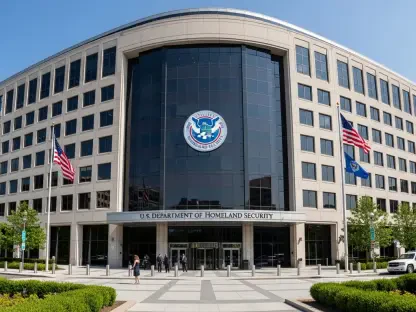The Sacramento-San Joaquin Delta is home to the Delta Smelt, a small, nearly extinct fish species. Once abundant, Delta Smelt are now facing imminent extinction. Recent water policy decisions have stirred controversy and debates regarding their impact on environmental sustainability, agriculture, and urban water usage.
The Delta Smelt Crisis
The Delta Smelt has not been recorded in annual surveys for the past six consecutive years. Historically abundant in the Sacramento-San Joaquin Delta, their numbers have plummeted due to habitat loss, water diversions, and declining water quality. Environmentalists point to these factors as the primary reasons for the species’ decline, emphasizing urgent action.
Despite the steep decline, not all stakeholders agree on the same solutions. While scientists highlight the need for increased water flows and habitat restoration, others push for balancing water needs for agriculture and urban development. This divide represents the broader complexities of water management and environmental conservation in the region.
Controversial Water Policy Decisions
Recently, the California Department of Water Resources (DWR) and the U.S. Bureau of Reclamation decided to cancel fall flow protections designed to aid in the Delta Smelt’s recovery. This decision has been met with significant criticism from environmental and fishing groups who see it as a step towards extinction for the Delta Smelt.
Critics argue the cancellation of these protections undermines years of collaborative efforts and scientific recommendations aimed at preserving the species. They assert that maintaining enhanced water flows during the fall is crucial for creating conducive conditions for the smelt’s survival. On the other hand, proponents of the policy change argue it reflects the necessity to prioritize water supplies for agriculture and urban needs.
Response from Environmental and Fishing Groups
Environmentalists and fish advocates have vocally opposed the decision to cancel fall flow protections. They argue that without these protections, there is little hope for the Delta Smelt’s survival. Fall water flows are essential for re-establishing suitable habitats and maintaining the ecological balance within the Delta.
These groups further contend that political influences are skewing water management policies in favor of short-term economic benefits instead of long-term ecological sustainability. They accuse both the Newsom and Biden administrations of continuing policies from the previous administration that prioritized water exports over environmental concerns.
Political and Economic Influences
The intersection of water management, politics, and economics has been a recurring theme in the debates over the Delta Smelt. Critics claim that political agendas are driving decisions that favor agriculture and urban centers at the expense of ecological health. Water exports from the Delta are a critical resource for California’s agriculture sector, which in turn, plays a significant role in the state’s economy.
On the surface, these decisions may seem like necessary compromises. However, environmental groups argue they are jeopardizing the Delta’s ecological future. They advocate for scientifically-informed policies that ensure sustainable water usage without sacrificing biodiversity and ecosystem integrity.
The Wider Ecological Impact
The Delta Smelt’s decline is part of a broader trend of ecological degradation in the Bay-Delta Estuary. Alongside the smelt, other species, such as Chinook Salmon and steelhead, are also experiencing dramatic population declines. This points to systemic issues in water management and habitat conservation strategies within the Delta.
The loss of biodiversity in the region has far-reaching implications. It disrupts the food web, affects water quality, and compromises the overall health of the ecosystem. Thus, addressing the Delta Smelt crisis represents more than just saving one species; it’s about preserving the entire ecological network of the Delta.
Experimental Hatchery Program
An experimental hatchery program has been introduced to reintroduce Delta Smelt into the wild. While this initiative offers a glimmer of hope, it has yielded limited success. Critics argue that without addressing the root causes of decline, such as poor water quality and inadequate flows, hatchery programs can only serve as temporary measures.
The reliance on hatcheries cannot replace the need for natural populations to thrive under sustainable conditions. Environmental advocates stress that improving natural habitat conditions and ensuring sufficient water flows are essential for the long-term recovery of the Delta Smelt and other endangered species.
The Path Forward: Balancing Conservation and Human Needs
The Sacramento-San Joaquin Delta is the habitat of the Delta Smelt, a small fish species teetering on the brink of extinction. Historically, these fish were prevalent in the Delta’s waters, but their numbers have dwindled dramatically in recent years, putting them at serious risk. The sharp decline of the Delta Smelt has ignited heated debates and controversies, especially in the context of recent water policy decisions made in the region.
These policies have sparked a complex conversation involving environmental sustainability, agricultural needs, and urban water consumption. Environmentalists argue that measures to protect Delta Smelt are essential for maintaining the ecological balance of the Delta and preventing the loss of biodiversity. However, farmers in the area express concerns that stringent water regulations limit their access to vital water resources, impacting crop yields and livelihoods. Similarly, urban areas are concerned with how water allocations might affect their supply, as cities continue to grow and demand more water.
At the heart of the debate is the need to find a balanced approach that supports the survival of the Delta Smelt while also addressing the water needs of agriculture and urban communities. This situation encapsulates the broader challenges of managing natural resources in a way that harmonizes environmental protection with human demands, emphasizing the intricate connections between ecosystems and socioeconomic activities.









